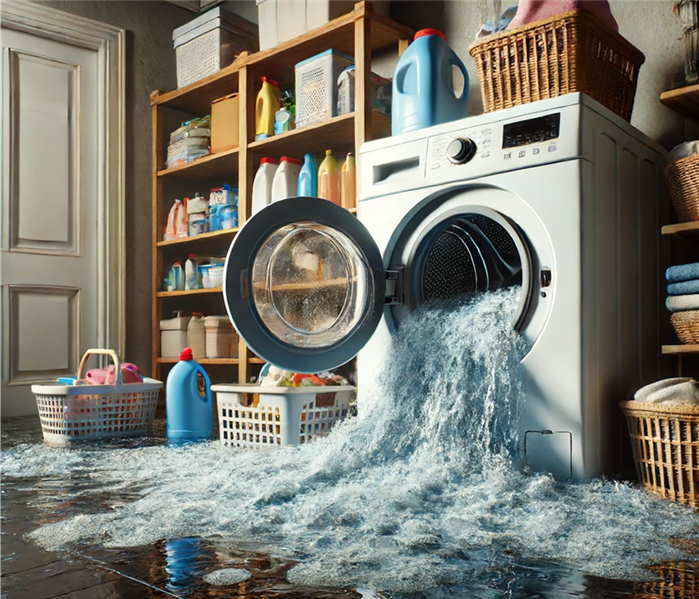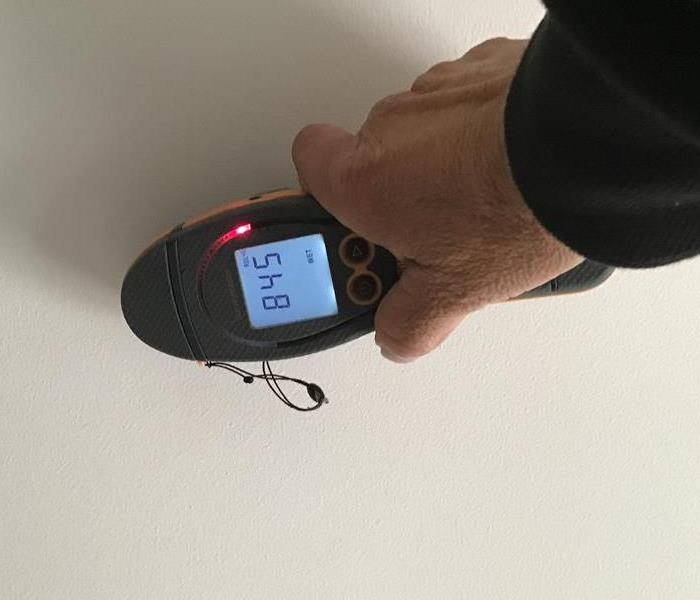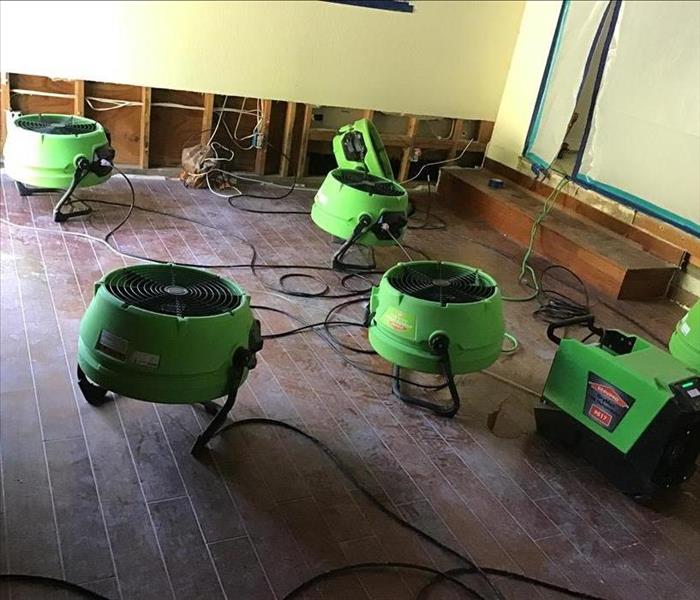Recent Water Damage Posts
The Importance of Prompt Structural Drying After Water Damage
6/13/2024 (Permalink)
 Washing Machine water is grey water damage.
Washing Machine water is grey water damage.
Why Immediate Drying Matters for SERVPRO of Santa Barbara and Santa Ynez/Goleta
Water damage can wreak havoc on your property, especially when it's not addressed quickly. At SERVPRO of Santa Barbara and SERVPRO of Santa Ynez/Goleta, we emphasize the critical need to dry your structure immediately following any water damage, particularly when sewage or gray water is involved. Here's why prompt structural drying is essential.
Types of Water Damage
Understanding the type of water that has infiltrated your home is crucial:
- Clean Water: From sources like broken pipes or rain.
- Gray Water: From appliances such as washing machines and dishwashers, containing some contaminants.
- Black Water: Includes sewage, containing harmful bacteria and pathogens.
Each type requires different handling and urgency, especially gray and black water due to health risks.
Risks of Delayed Drying
1. Health Hazards
- Mold Growth: Mold can begin to grow within 24-48 hours in a damp environment. This is particularly dangerous when gray or black water is involved, as it contains bacteria and can lead to serious respiratory issues.
- Pathogens: Black water contamination can expose you to harmful bacteria, viruses, and parasites, increasing the risk of illness.
2. Structural Damage
- Warping and Rot: Prolonged moisture exposure can lead to warping and rotting of wood and other building materials. This weakens structural integrity and leads to costly repairs.
- Drywall Damage: Drywall can swell and deteriorate when wet, compromising the stability of walls and ceilings.
3. Electrical Hazards
Water damage can pose significant risks to your electrical system, potentially leading to short circuits or even fires if water infiltrates wiring.
The SERVPRO® Approach to Drying
At SERVPRO of Santa Barbara and SERVPRO of Santa Ynez/Goleta, we employ a meticulous drying process to mitigate these risks:
1. Rapid Response
Our teams are available 24/7 to respond swiftly to water damage incidents. Rapid response is critical in preventing further damage and reducing the drying time required.
2. Assessment and Extraction
We begin with a thorough assessment to determine the extent of water damage and the type of water involved. Using state-of-the-art equipment, we extract standing water to prevent further spread.
3. Drying and Dehumidification
- Advanced Equipment: We use industrial-grade dehumidifiers and air movers to ensure complete drying of affected areas. Our technology allows us to monitor moisture levels in walls, floors, and ceilings to guarantee thorough drying.
- Targeted Drying: We focus on hard-to-reach areas that are often overlooked, ensuring no hidden moisture remains.
4. Sanitization
Especially with gray or black water, we perform extensive sanitization to eliminate any contaminants and prevent health risks. This step is crucial for restoring a safe living environment.
Benefits of Prompt Drying
- Prevents Mold Growth: Timely drying stops mold from taking hold, protecting your health and property.
- Minimizes Repair Costs: Quick action reduces the extent of damage, saving on expensive repairs down the line.
- Restores Normalcy: Faster drying means you can return to your normal life sooner, minimizing disruption.
Trust SERVPRO for Professional Water Damage Restoration
When water damage strikes, especially with contaminated water, time is of the essence. SERVPRO of Santa Barbara and SERVPRO of Santa Ynez/Goleta are your trusted partners in efficient and thorough structural drying. Our prompt, professional response helps mitigate risks and restore your property to its pre-damage condition.
Don't wait for water damage to worsen. Contact SERVPRO of Santa Barbara and SERVPRO of Santa Ynez/Goleta immediately for expert water damage restoration and drying services.
Detecting Hidden Water Damage: The Critical Role of Technology in Early Identification
11/17/2023 (Permalink)
 Protimeter Moisture meter used to check a water damaged wall
Protimeter Moisture meter used to check a water damaged wall
At SERVPRO of Santa Barbara and SERVPRO of Santa Ynez/Goleta, we understand that water damage can be a silent yet destructive force in your property. Often, the signs of water damage are not immediately apparent, and if left unchecked, they can escalate into more significant and costly problems. Our goal is to help you identify and address these issues promptly, ensuring the safety and integrity of your building.
The Invisible Threat
Water damage can be deceptive. In its early stages, it might not show any visible signs, lulling property owners into a false sense of security. However, moisture has a way of seeping into hidden parts of a structure, like behind walls, under flooring, or in ceiling spaces. If unattended, this hidden moisture can weaken structural components, ruin materials, and create an ideal environment for mold growth, which can occur in as little as 48 hours.
The Power of Technology
To combat these hidden threats, SERVPRO employs state-of-the-art technology:
Protimeter Moisture Meters: These sophisticated devices are critical in our toolkit. They precisely measure the moisture content in various building materials. By detecting abnormal moisture levels, we can identify potential water damage even when it's out of sight.
FLIR Infrared Cameras: These cameras are invaluable for quickly scanning large areas to detect temperature differences. Water evaporation causes cooling, so wet areas often show up as cooler spots in thermal imaging. This method allows us to pinpoint areas of concern that might otherwise go unnoticed.
Early Detection: A Cost-Effective Approach
The key to managing water damage is early detection. By identifying and addressing moisture issues early on, we can prevent more extensive damage and costly repairs. Early intervention also minimizes the disruption to your daily life or business operations, making the remediation process less invasive.
The Dangers of Mold
One of the most significant risks of unaddressed water damage is mold growth. Mold can start developing within 48 hours in the right conditions, posing potential health effects and further property damage. By using our advanced detection methods, we can help mitigate this risk effectively.
Why Choose SERVPRO
At SERVPRO of Santa Barbara and SERVPRO of Santa Ynez/Goleta, we combine our expertise with cutting-edge technology to offer you the best in water damage detection and remediation. Our team is trained to handle water damage of any scale, ensuring a thorough and efficient process from start to finish.
Conclusion
Remember, the sooner water damage is addressed, the less expensive and invasive the drying and repair process will be. Don’t let hidden water damage compromise your property. Trust SERVPRO to provide the professional care and technological expertise needed to protect your investment.
Navigating Water Damage Restoration in Santa Barbara, California
11/17/2023 (Permalink)
 SERVPRO drying equipment set up
SERVPRO drying equipment set up
Experiencing water damage in your Santa Barbara property can be daunting. Water's ability to seep into materials like drywall, insulation, and furniture can exacerbate the issue, especially following incidents like burst pipes or toilet overflows. Addressing this effectively involves several critical steps.
1. Initial Water Removal
Start by eliminating as much water as possible. Utilize wet/dry vacuums or shop vacs to extract water. In cases of persistent standing water, resort to mops and buckets. Swift removal is key to mitigate further damage.
2. Dehumidification and Ventilation
Reducing humidity is crucial. Deploy dehumidifiers to lower moisture levels, which are essential in preventing mold growth. Absent dehumidifiers, use fans and open windows to enhance air circulation. Promptly remove wet textiles, including clothes and carpets, as they can retain moisture and foster mold.
3. Disinfection and Sanitization
After water removal, disinfect and sanitize affected areas. Employ suitable disinfectants for surfaces like countertops and floors. For mold concerns, especially on walls or ceilings, ensure thorough drying before treatment. In persistent mold cases, professional assistance, such as from SERVPRO of Santa Barbara, is advisable.
4. Repair or Replacement of Damaged Items
Assess whether items need repair or replacement. Irreparable items, including soaked carpets or damaged drywall, should be replaced. For salvageable items, clean and sanitize them carefully, avoiding harsh chemicals that could cause additional damage.
5. Monitoring Post-Cleanup
Continuously monitor the affected area post-cleanup to ensure complete drying and to check for mold reemergence. This vigilance is essential for at least a week following the incident.
6. Prompt Action is Essential
Quick response to water damage is critical to prevent escalation, which can lead to structural damage and mold proliferation—both costly to remedy.
For comprehensive assistance in water damage restoration in Santa Barbara, professionals like those at SERVPRO® are equipped to guide and assist in effectively managing such scenarios.
How to Prepare for an Insurance Adjuster's Visit After a Water Damage Event
7/13/2023 (Permalink)
When you experience water damage to your home or business, the insurance claim process plays a crucial role in your recovery. Preparing for an insurance adjuster's visit after a water loss can help ensure a fair and accurate assessment of the damages. In this blog post, we will provide valuable tips on how to effectively prepare for an insurance adjuster's visit, maximizing your chances of a successful insurance claim.
Document the Initial Damage
Before the insurance adjuster arrives, document the initial damage by taking photographs or videos of the affected areas. Capture the extent of the water damage, including any standing water, damaged materials, and belongings. Ensure that the documentation is clear, well-lit, and captures all the necessary details. This evidence will support your claim and provide a clear visual representation of the damages for the insurance adjuster to review.
Compile Relevant Information
Gather all relevant information and documents related to the water damage loss. This includes your insurance policy, any photographs or videos taken during the incident, receipts for emergency repairs or services, and any communication you've had with your insurance company. Having all these documents readily available will help streamline the discussion with the insurance adjuster and ensure that you provide accurate information to support your claim.
Make a Detailed List of Damaged Items
Create a comprehensive list of all items affected by the water damage, including furniture, appliances, electronics, and personal belongings. Provide as much detail as possible, including the item's description, age, value, and any pre-existing damage. This inventory will help you accurately assess the value of your loss and ensure that you don't miss any items during the assessment. Having a detailed list will also demonstrate your thoroughness and organization to the insurance adjuster.
Prepare to Answer Questions
Anticipate the questions that the insurance adjuster may ask during their visit. Be prepared to provide a detailed account of how the water damage occurred, the timeline of events, and any actions you took to mitigate further damage. Answer questions honestly and accurately, providing any relevant documentation or evidence to support your statements. Stay focused on the facts and avoid making assumptions or exaggerating the extent of the damage. Clear and concise communication will help establish trust and credibility during the visit.
Preparing for an insurance adjuster's visit after a water damage loss is crucial for a successful claims process. By documenting the initial damage, compiling relevant information, making a detailed list of damaged items, and preparing to answer questions, you can present a strong case to the insurance adjuster. Effective preparation increases the likelihood of a fair and timely resolution to your water damage claim.





 24/7 Emergency Service
24/7 Emergency Service
